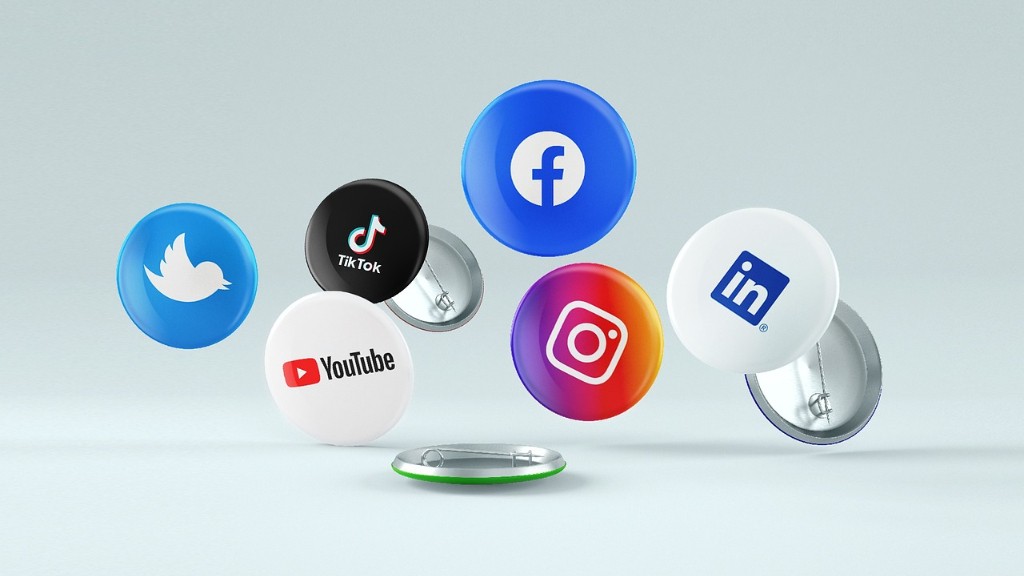As the popularity of social media networks continues to grow, so does the need for effective ways to measure the return on investment (ROI) of marketing efforts on these platforms. Given that Facebook is one of the most widely used social networks, with over 2 billion active users, it is no surprise that marketers are keen to understand how to measure the success of their Facebook marketing campaigns.
There are a number of ways to measure the ROI of Facebook marketing, and the most appropriate method will depend on the goals of the campaign. For example, if the goal is to increase brand awareness, then measures such as engagement (likes, comments, shares) and reach (the number of people who have seen the content) can be used. If the goal is to generate leads or sales, then clicks, conversions and cost-per-conversion can be tracked.
Other important factors to consider when measuring the ROI of Facebook marketing include the quality of leads generated, as well as any long-term effects such as loyalty and repeat purchase behavior.
There’s no one definitive answer to this question, as the success of a Facebook marketing campaign can vary depending on factors such as the goals of the campaign, the target audience, and the content. However, some metrics that could be used to measure the success of a Facebook marketing campaign include engagement rates (likes, comments, shares), reach (the number of people who see the content), and click-through rates (CTRs).
What are the KPIS for Facebook marketing?
There are a number of key performance indicators (KPIs) and metrics that you can use to measure the success of your Facebook page. Here are some of the most important ones to keep an eye on:
1. Number of Fans: This is a basic metric, but it’s still important to track how many people are liking and following your page.
2. Follower Demographics: It’s also helpful to know who your fans are in terms of age, gender, location, and other factors. This information can help you tailor your content and marketing strategies to better appeal to your target audience.
3. Page Views by Sources: Another key metric to track is how many people are viewing your page, and where they’re coming from. This information can help you gauge the reach of your page and see which marketing channels are most effective.
4. Actions on Page: It’s not enough just to get people to view your page. You also want them to take some kind of action, such as liking a post, sharing a post, commenting on a post, or clicking on a link. This metric can help you see which types of content are most engaging for your audience.
5. Reach by Post Type: This
This is a good way to start measuring the success of your Facebook advertising, but it’s not always a surefire way to get accurate results.
How does Facebook measure its performance
The average engagement rate per post by reach is a good way to measure the success of your posts. It is calculated by the sum of interactions, comments and shares, divided by the total number of posts and then all divided by your posts’ reach The result is then multiplied by 100 to obtain a percentage.
The Growth Rate calculation is a way to measure the change in number of followers over a certain period of time. To calculate the Growth Rate, you need the number of followers on the first and last day of the time interval you’re measuring, and then divide the difference by the number of followers on the first day. This will give you the Growth Rate as a percentage.
What are the 5 marketing metrics?
As a marketer, you should always be watchful of the five marketing metrics: total number of conversions, reach & engagement levels, conversion rate by channel, cost per sale/acquisition, and return on investment. By keeping an eye on these metrics, you can ensure that your marketing campaigns are effective and achieving the desired results.
There are 7 crucial Facebook metrics that you should be tracking in 2022:
1. Reach
2. Impressions
3. Reach demographics
4. Engagement
5. CPC & CPM
6. Audience share
7. Sentiment
How to measure Facebook marketing results?
This is the formula for Facebook’s Click-Through Rate (CTR). CTR is a measure of how often people who see your ad end up clicking it. A higher CTR means that your ad is more effective, and Facebook will charge you less per click.
If your ad has a low relevance score, it means that Facebook thinks that your ad is not a good match for the people you’re trying to reach. This could be because your target audience is too broad, or because the content of your ad is not relevant to the people you’re trying to reach. Either way, a low relevance score is not good news.
Fortunately, there are a few things you can do to improve your relevance score. First, make sure that your target audience is as specific as possible. The more specific you can be, the more likely it is that your ad will be relevant to the people you’re trying to reach.
Second, take a look at the content of your ad. Is it truly relevant to the people you’re trying to reach? If not, try to make it more relevant. The more relevant your ad is, the higher your relevance score will be.
Improving your relevance score is important if you want your Facebook ads to be successful. Keep an eye on your relevance score, and make sure that it’s as high as it can be.
What are the 3 factors that affect your FB ads success
In order to create a successful Facebook ad, you need to define your target audience, craft messaging that resonates, use visual elements that are attention-grabbing, and set measurable goals. By following these four guidelines, you can create an ad campaign that is more likely to achieve success.
Facebook’s 20% text rule was a guideline that stated that no more than 20% of an ad’s image could be occupied by text. While it was still a guideline as of 2021, it was no longer enforced or a reason that ads got outright rejected. The social network decided to do away with the rule in 2021, much to marketers’ delight.
What are 5 performance measures?
Each of these measures is important in gauging the success of state government programs and initiatives. Input measures track the resources used to deliver a service or produce a good, while output measures track the results of those efforts. Efficiency measures compare the input and output measures to assess whether the resources used were appropriate given the results achieved. Quality measures assess whether the results achieved meet customer expectations. Finally, outcome measures track the long-term impact of a program or initiative.
Employee engagement, satisfaction and turnover are important indicators of a company’s health. A company needs to keep track of these indicators in order to gauge its performance and make improvements where necessary.
What are the 5 C’s of marketing
The 5C Analysis is a marketing framework to analyze the environment in which a company operates. It can provide insight into the key drivers of success, as well as the risk exposure to various environmental factors. The 5Cs are Company, Collaborators, Customers, Competitors, and Context.
There are numerous KPIs that can be used to measure progress in marketing channels, but some examples include unique website visitors and cost per lead. By tracking these numbers, businesses can get a better sense of which marketing strategies are working and which need to be improved.
How do you measure successful marketing?
There are a lot of different metrics that marketing executives can track, but some of the more common ones include overall impressions, lead generation response rates, cost-per-lead, cost-per-sale, return on investment (ROI), lifetime value of a customer, and return on engagement (ROE). There are plenty of other options too, so it really depends on what kind of information the executive is looking for. But tracking these metrics can give them a good idea of how their marketing campaigns are performing and where they might need to make some changes.
According to recent research, advertisers should expect to pay $094 per click or $1207 per 1,000 impressions on Facebook. This means that Facebook bills advertisers based on either CPC (cost per click) or CPM (cost per mille, or cost per 1,000 impressions) depending on which metric is more applicable to the particular ad campaign.
What’s a good result rate for Facebook ads
The average conversion rate for Facebook Ads is 9.21%. A “good” conversion rate would be around 10% or more.
It’s important to monitor your engagement metrics and traffic volume metrics in order to gauge the success of your social media efforts. By comparing these metrics to your competition, you can get a better idea of how you’re performing in the market.
Warp Up
There is no one answer to this question, as there are many different ways to measure the success of Facebook marketing campaigns. Some common metrics used to track performance include reach (how many people saw your content), engagement (how many people interacted with your content), and conversion (how many people took the desired action). You can also track other important measures such as leads generated, sales, and website traffic.
There is no one definitive answer to the question of how to measure Facebook marketing. Different businesses will have different goals and objectives for their Facebook marketing campaigns, and so will need to tailor their measurement methods accordingly. Some common metrics that businesses might use to measure the success of their Facebook marketing include engagement rate (likes, comments, shares, etc.), reach (the number of people who see your content), and click-through rate (the number of people who click on links in your content). Ultimately, the most important thing is to select the metrics that are most relevant to your business goals and that will give you the most insights into the effectiveness of your Facebook marketing.





